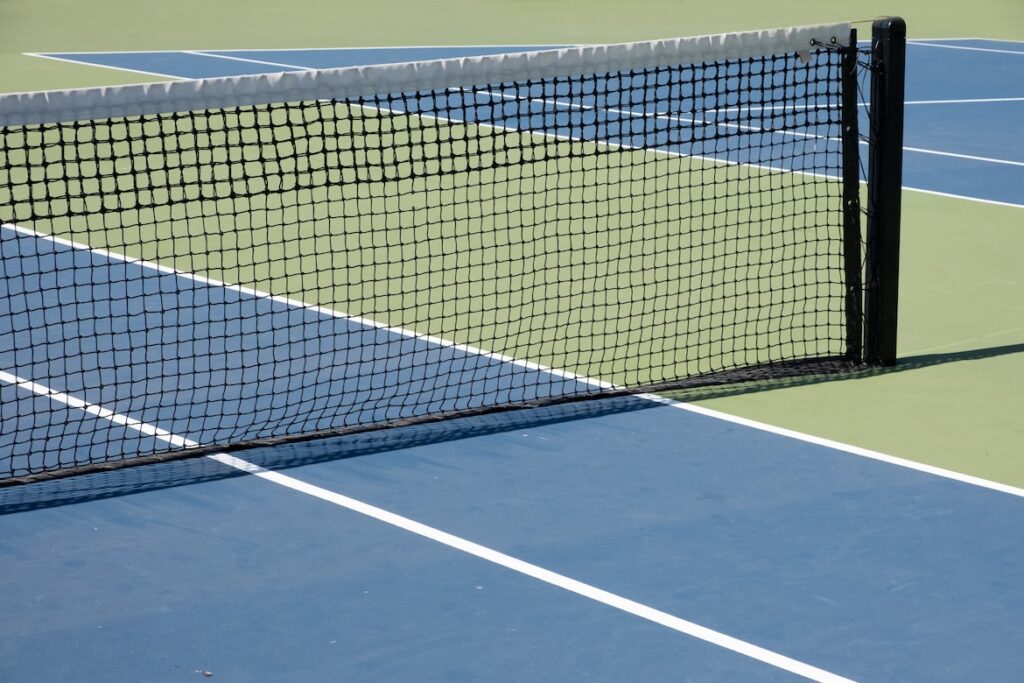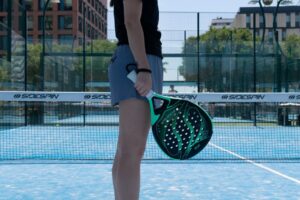Mastering the No-Volley Zone in Padel: Tips and Techniques for Success
3 min read
Mastering the No-Volley Zone in Padel: Tips and Techniques for Success
What is the No-Volley Zone in Padel?
As a padel enthusiast, you’ve probably heard of the no-volley zone, also known as the kitchen or the non-volley zone. Understanding and mastering this area of the court is crucial to your success in padel. So, what exactly is the no-volley zone? Let’s dive into it!
The no-volley zone is a rectangular area located near the net on both sides of the court. It extends 6.10 meters from the net, towards the baseline (3 meters on either side of the net). Within this zone, players are not allowed to hit the ball before it bounces once on their side of the court. This rule exists to prevent players from gaining an unfair advantage by smashing the ball very close to the net.
Why is the No-Volley Zone Important?
The no-volley zone plays a significant role in the tactical aspect of padel. It adds an exciting layer of strategy and demands quick reflexes from players. Controlling this zone effectively can provide you with a strong advantage during the game.
Now that we know the basics, let’s explore some tips and techniques on mastering the no-volley zone.
1. Footwork and Proper Positioning
Footwork is the foundation of all movement in padel. To control the no-volley zone, you need to position yourself correctly. Stand with your knees slightly bent, weight evenly distributed, and be ready to move swiftly in any direction.
Anticipating your opponent’s shots is essential. By analyzing their body language and racket position, you can preemptively position yourself in the most advantageous spot within the no-volley zone. Remember, being mentally present and agile will give you an edge.
2. Patience and Timing
An essential aspect of the no-volley zone is patience. It’s tempting to rush forward and take a volley shot, but this can be a mistake. Wait for the ball to bounce before moving in to strike it. By doing so, you give yourself time to assess the ball’s trajectory, increasing your chances of a successful shot.
Moreover, timing is key. Try to hit the ball at the peak of its bounce, as it gives you better control and allows for more precise shots. Hitting the ball too early or too late can result in an error, so practice your timing to perfection.
3. Soft Shots and Drop Shots
The no-volley zone is an ideal area to incorporate soft shots and drop shots. Instead of going for powerful smashes, focus on placing the ball strategically. Soft shots that land near the net can be difficult for your opponents to return effectively, putting you in a dominant position.
Drop shots are another excellent technique to employ in the kitchen. These shots have a low trajectory, usually landing just over the net. Mastering drop shots allows you to surprise your opponents and control the game tempo.
4. Lob Shots and Defensive Play
When under pressure or dealing with opponents who dominate the no-volley zone, using lob shots is a smart move. A well-executed lob shot sends the ball high over your opponents, allowing you to regain control and make a strategic repositioning.
During defensive plays, it’s crucial to focus on keeping the ball deep in your opponents’ side of the court. Pushing your opponents away from the net by using deep shots reduces their chances of making effective volleys or smashes, buying you time to regain momentum.
Conclusion
The no-volley zone in padel is a game-changer. Mastering it requires practice, strategy, and a clear understanding of the rules. By honing your footwork, employing patience, utilizing soft shots and drop shots, and incorporating lob shots and defensive play, you’ll become a force to be reckoned with in the no-volley zone.
So, fellow padel enthusiasts, step up your game, dominate the kitchen, and enjoy the thrill of controlling the no-volley zone in padel!







